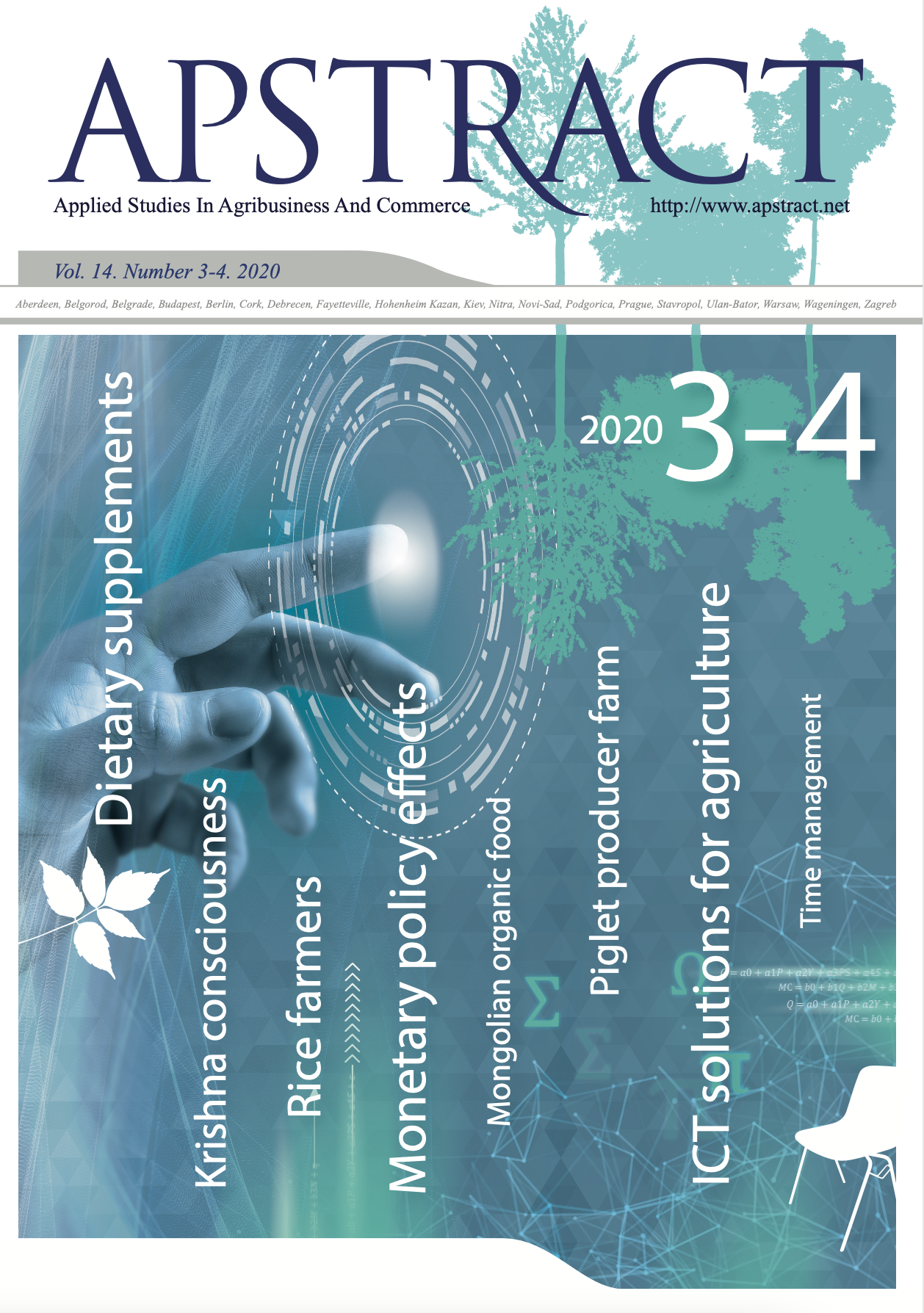Investment analysis of a piglet producer farm – a Hungarian case study
Authors
View
Keywords
License
Copyright (c) 2020 Univesity of Debrecen, Faculty of Economics and Business, Hungary

This work is licensed under a Creative Commons Attribution-NonCommercial 4.0 International License.
How To Cite
Abstract
The pig population in Hungary was about 8 million in 1990, while this number dropped to only 2.8 million by 2018. The previously so successful integrated domestic pig farming has almost completely disappeared and most of the smaller farms still operating in the 1990s are no longer functioning. At present, a process of concentration can be observed, which was accompanied by the further specialization of pig farming. The main profile of most pig farms is fattening, but there is a smaller number of farms in Hungary today specialized for piglet production, the successful operation of which requires significantly more expertise and more complex technology.
The main aim of this study is to present the production and economic indicators of a pig farm specialized in piglet production in Hungary as a result of a greenfield investment in the current economic environment, on a case study basis. For this purpose, an economic simulation was prepared based on primary data collection, operating on a deterministic basis, modelling the production and economic processes of the farm. The performed calculation does not derive the economic indicators of the activity from accounting records, but assigns the prices of natural inputs used on the basis of technological data. Primary data and information collection (e.g. technological data, input and output prices, unit cost items, etc.) took place between 2018-2019.
At the purchase prices of pigs in the last two years, which have increased significantly due to the African Swine Fever (ASF), the majority of pig farms in Hungary have an outstanding profit-making capacity. The physical efficiency indicators of the analysed pig farm are almost identical to the average data of such farms in the Netherlands, which has one of the most developed pig industry. The income of the examined pig farm at farm level is about 734 thousand EUR, i.e. 232 EUR per sow. Moreover, this activity is profitable even without subsidies. As a result, the greenfield investment pays off in the 8th year by default (average scenario). The investment has a Net Present Value (NPVr=3%) of EUR 2,609 thousand for 10 years, an Internal Rate of Return of 8.5%, and a Profitability Index (PIr=3%) of 1.3. At the same time, risk factors such as sales prices, output and capacity utilization, and feed costs should be taken into consideration as in extreme cases the return on investment may be unfavourable (pessimistic scenario).
JEL code: D24, M11, Q12


 https://doi.org/10.19041/APSTRACT/2020/2-3/15
https://doi.org/10.19041/APSTRACT/2020/2-3/15




